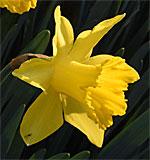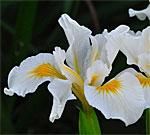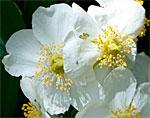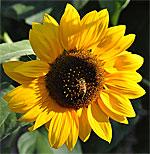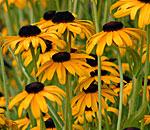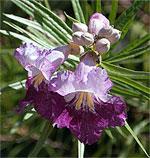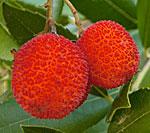The Water-Efficient Landscape Gardens
Home » Fair Oaks Horticulture Center » WEL » Monthly tips
The WEL gardens at the Fair Oaks Horticulture Center are open to the public seven days a week from sunrise to sunset for self-guided tours.
Wheelchair accessible, the gardens feature natives, commonly available perennials, trees, shrubs, and plants from other Mediterranean climates that do well with less water during our long, hot, dry summers and tolerate our chilly, damp Sacramento County winters. Most plants are labeled and many are UC Davis Arboretum All-Stars. The landscape demonstrates how home gardeners can be smart about using the water we have to create beautiful landscapes. (For more information see Gardening with Limited Water.)
January
|
|
February
|
|
March
|
|
AprilGarden chores this month include:
|
|
MayMay is the time to stop by and smell our roses, enjoy our spring blooming perennials, flowering cool season grasses and more. Lavenders and salvias with names like Hot Lips, Lipstick, Bees Bliss and Whirly Blue are top May choices for pollinating bees and hoverflies. For information about plants that are attractive in Sacramento in May, see the WEL spring plant list. Garden chores this month include:
|
|
JuneAlthough the calendar says summer arrives June 20, our early June weather feels more like midsummer. Many of our ornamental grasses are starting their long-lasting bloom cycles. Fresh blossoms of summer flowering sages, goldenrod, hummingbird plant, and santolina delight the eyes and beckon birds, bees and other beneficials. See information about attracting beneficial insects to your garden (Garden Note 129) and Master Gardeners of Clackamas County, Oregon YouTube video Best Bee Flowers. Come see our volunteer sunflowers, lantana, butterfly bushes, and native sulfur buckwheat blooms. Blue gray and lavender Russian sages, lamb’s ear, plumbagoes, society garlic, lantana, and verbenas add a cooling touch. For plant choices that are attractive in Sacramento in June, go to the WEL spring and summer plant lists. Garden chores this month include:
|
|
JulySummer peaks this month with long, dry, often very hot days and balmy nights. Here in the garden shimmering ornamental grasses act as a background for heat-loving buckwheat, lantanas, crape myrtles, sunflowers, rudbeckias, goldenrod, and more. Cooling gray, green and lavender-colored Russian sages, Cape plumbago, junipers, and caryopteris provide a calming contrast to the riot of bright blooms. Bees, butterflies, birds and beneficial insects drift happily about the garden. For plant choices that perform well in Sacramento in July, see the WEL summer plant list. Garden chores this month include:
|
|
August
|
|
September
|
|
October
|
|
November
|
|
December
|





